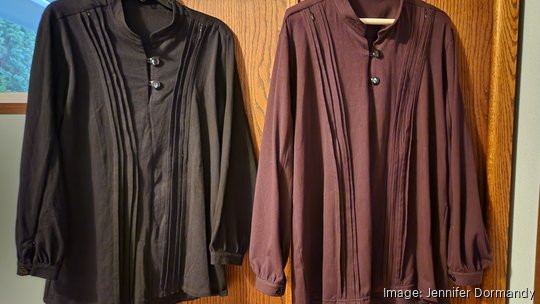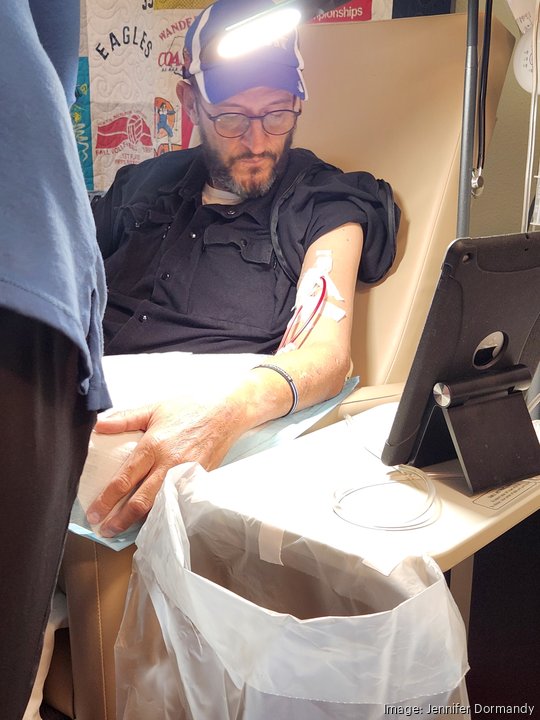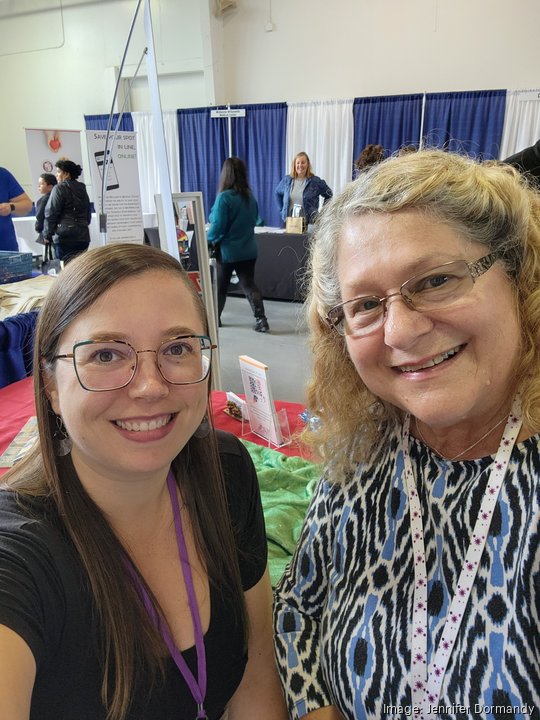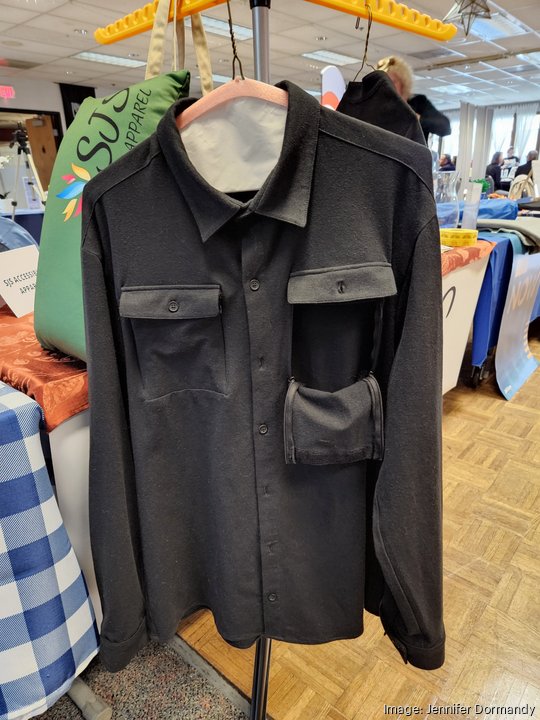
When Sheldon Penner started undergoing dialysis treatments last year, he found that one of the annoyances had to do with clothing.
Penner, who owns a pancake catering business in Gresham, was undergoing treatments three times per week and had to tape up his sleeve to allow the nurses to place his dialysis catheter. Then he learned about an elegant solution that could make at least that one aspect of the ordeal a little easier.
Penner purchased a black long-sleeved shirt with cleverly hidden zippers all the way up the sleeve.

“The whole arm opens and it’s like you’re wearing a sleeveless shirt,” Penner said. “I love the shirt because I can go to a meeting after, and nobody would know.”
The brains behind the garment are two dialysis nurses from Gresham: Jennifer Dormandy and her niece Hillary Gilbert.

They came up with the idea for the shirts after observing and hearing from their patients, for whom getting dressed in the morning and then re-dressing after treatment is not only a hassle but also draining. Blood and fluids can also stain their clothes. Some patients even cut a hole or open a seam in their own shirts to accommodate the catheters, Dormandy said.
“The patients come in and they’re somewhat depleted because they are in kidney failure,” Dormandy said. “Along with that, your immune system becomes weaker, and your energy levels decrease because your body is trying to fight all these different things, so anything they can do to save energy is very helpful.”
Hemodialysis removes wastes and extra fluid from the blood through filters and tubes. In 2018, more than 785,000 Americans had kidney failure and required dialysis or a kidney transplant to survive, according to the National Kidney Foundation. By 2030, the number on dialysis is estimated to reach 971,000.
Dialysis and chemo treatments last for several hours. Soft clothing with hidden access points is not only more comfortable but helps patients retain a sense of dignity, Normandy said.

“You want to keep these people feeling as good as you can,” she said. “Any energy they can save allows them to use it up on things that really matter, whether going to the grocery store or exercising for their own health and well-being.”
The two partners each put in $10,000 and raised another $5,000 through a GoFundMe page to found SJS Accessible Apparel two years ago. The initials stand for “spirit, journey and style.”
“There are quite a few other companies that do shirts that are accessible for dialysis,” Gilbert said. “Our niche is having something that doesn’t look like medical apparel or athletic apparel, but you could wear it anywhere.”
The shirts not only feature hidden zippers running up the sleeves, but also under the front pockets of the men's shirts and under pleats on the front to allow for lines be placed in the arms or chest. The shirts also work well for those undergoing chemotherapy and other infusions, Dormandy said.
Collaborating with a professional seamstress, Juliet’s Sewing Factory in Vancouver, on the shirt design, Dormandy and Gilbert started with 100 shirts for men and 100 for women, in a range of sizes. They chose fabric cotton-Lycra blend that’s easy to launder.
They’ve sold a bit more than half to date. More women have purchased the shirts than men, though wives and girlfriends appear to be shopping for their partners. The shirts are listed for $120 on SJS’s website. Normandy said she is working with insurance companies to consider reimbursement for the shirts.
Meanwhile, Normandy has been marketing SJS mainly through social media but has also distributed flyers to nephrology and dialysis clinics and she hopes to attend trade shows.
She said she wants to add another style of shirt, such as a cowl neck with hidden zippers in a raglan-style sleeve. They also hope to soon add more colors besides basic black, including maroon, dark purple and hunting green.
“If you look at accessible clothing, there is not much to choose from in the current market,” Dormandy said. “As nurses, we understand and know how to fill that void.”



